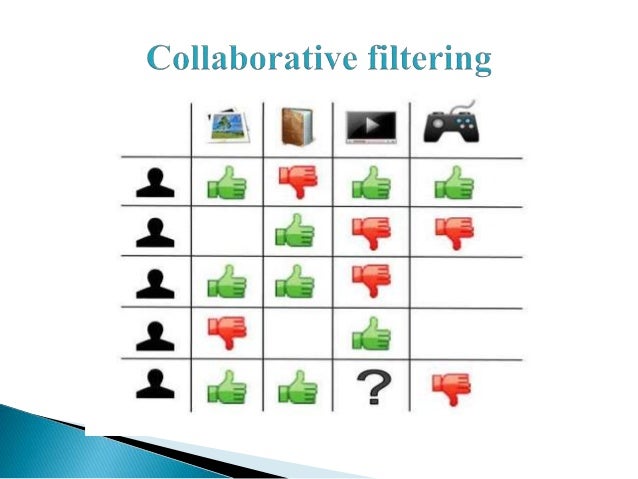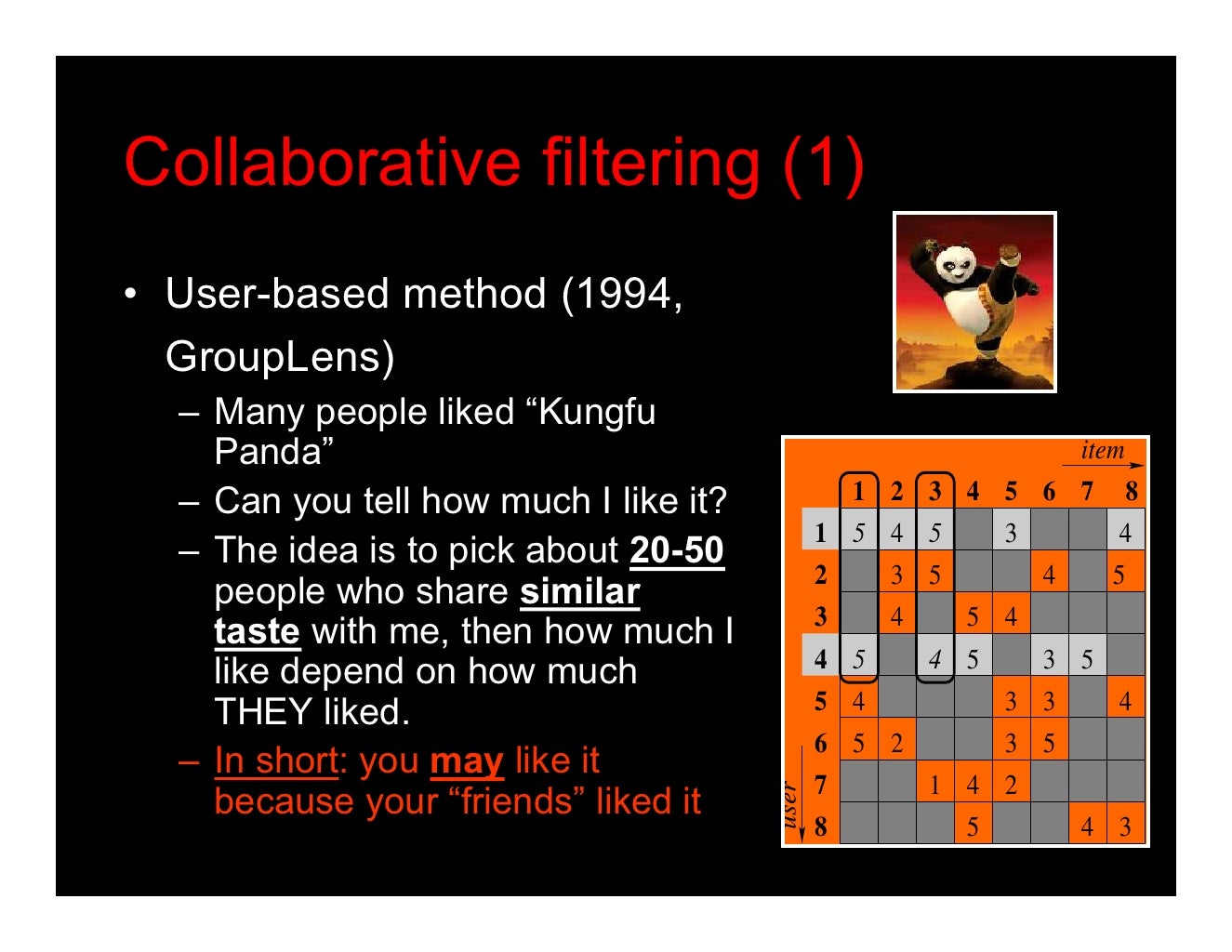Collaborative Filtering For Recommendation System Presentation
| Introduction to Collaborative Filtering | ||
|---|---|---|
| Collaborative filtering is a commonly used technique in recommendation systems. It analyzes user behavior and preferences to provide personalized recommendations. It relies on the idea that users with similar tastes in the past will have similar preferences in the future. | ||
| 1 | ||
| Types of Collaborative Filtering | ||
|---|---|---|
| User-based collaborative filtering: Recommends items based on the preferences of similar users. Item-based collaborative filtering: Recommends items based on the similarity between items. Hybrid collaborative filtering: Combines user-based and item-based approaches for improved accuracy. | ||
| 2 | ||
| Steps in Collaborative Filtering | ||
|---|---|---|
| Data collection: Gathering user preferences and behavior data. Similarity calculation: Measuring the similarity between users or items using techniques like cosine similarity or Pearson correlation. Recommendation generation: Predicting ratings or preferences for items based on similarity scores. | ||
| 3 | ||
| Advantages of Collaborative Filtering | ||
|---|---|---|
| No need for explicit item features or content knowledge. Effective in handling new and unpopular items. Able to capture complex user preferences and patterns. | ||
| 4 | ||
| Challenges in Collaborative Filtering | ||
|---|---|---|
| Cold start problem: Difficulty in providing recommendations for new users or items with limited data. Sparsity: Lack of sufficient data on user-item interactions, leading to limited accuracy. Scalability: Handling large datasets and high-dimensional data can be computationally expensive. | ||
| 5 | ||
| Techniques to Address Challenges | ||
|---|---|---|
| Content-based filtering: Utilizing item features or content information to overcome the cold start problem. Matrix factorization: Decomposing the user-item matrix to capture latent factors and reduce sparsity. Dimensionality reduction: Applying techniques like singular value decomposition (SVD) to handle scalability issues. | ||
| 6 | ||
| Evaluation Metrics for Collaborative Filtering | ||
|---|---|---|
| Accuracy measures: Evaluating the accuracy of predicted ratings or preferences. Coverage measures: Assessing the proportion of items that can be recommended. Novelty measures: Measuring the diversity and freshness of the recommendations. | ||
| 7 | ||
| Real-World Applications of Collaborative Filtering | ||
|---|---|---|
| E-commerce platforms: Recommending products based on user preferences and purchase history. Streaming services: Suggesting movies or TV shows based on user ratings and viewing behavior. Social media platforms: Recommending friends or connections based on common interests or mutual connections. | ||
| 8 | ||
| Limitations of Collaborative Filtering | ||
|---|---|---|
| Limited to user-item interactions: Cannot incorporate external factors or context in recommendations. Vulnerable to shilling attacks: Manipulation of ratings or preferences to influence recommendations. Privacy concerns: Collecting and analyzing user data raises privacy issues. | ||
| 9 | ||
| Conclusion | ||
|---|---|---|
| Collaborative filtering is a powerful technique for building recommendation systems. It utilizes user behavior and preferences to provide personalized recommendations. While it has challenges and limitations, it remains a widely used and effective approach in various domains. | ||
| 10 | ||








